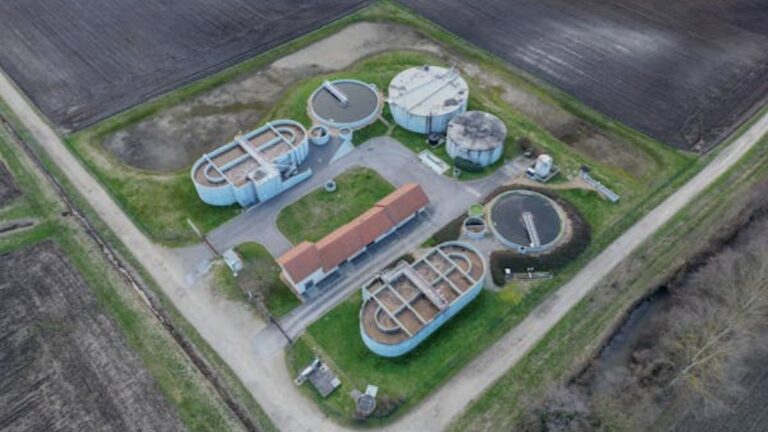Substance abuse remains a significant public health challenge worldwide. It affects individuals across all ages, backgrounds, and socioeconomic statuses, leading to profound personal, familial, and societal consequences. Recognizing what constitutes substance abuse, understanding the various types and patterns, and being aware of causes, signs, and treatment options are essential steps toward addressing this pervasive issue. This comprehensive guide explores the multifaceted aspects of substance abuse, providing valuable insights to foster awareness, prevention, and support.
Understanding Substance Abuse
Definition of substance abuse
Substance abuse refers to the harmful or hazardous use of substances such as alcohol, illegal drugs, or prescription medications. It involves a pattern of use that leads to significant impairment, health risks, or social problems. Unlike casual or social use, substance abuse often results in adverse consequences affecting daily functioning and well-being.
Difference between use, misuse, and dependence
- Use: Consuming substances in moderation or as prescribed, without causing harm.
- Misuse: Using substances improperly, such as taking higher doses than recommended or using without medical advice, risking health problems.
- Dependence: A chronic condition characterized by compulsive use, tolerance, and withdrawal symptoms when not using the substance.
Prevalence and societal significance
According to the World Health Organization, hundreds of millions globally suffer from substance abuse disorders, leading to increased mortality, morbidity, and economic burden. It impacts productivity, healthcare systems, and community safety, highlighting the urgent need for effective prevention and treatment strategies.
Impact on individuals, families, and communities
Individuals dealing with substance abuse often face deteriorating physical health, mental health issues, and social isolation. Families may experience emotional distress, financial strain, and breakdowns in relationships. Communities bear the brunt through increased crime rates, healthcare costs, and decreased social cohesion.
Types of Substance Abuse
Common substances involved
Alcohol
One of the most widely used legal substances, alcohol abuse can lead to liver disease, cardiovascular problems, and accidents. It is often involved in social and psychological issues related to substance abuse.
Illegal drugs
- Cocaine: A powerful stimulant linked to cardiovascular complications and addiction.
- Heroin: An opioid associated with overdose risks and severe dependency.
- Methamphetamines: Highly addictive stimulants causing mental health problems and physical deterioration.
Prescription drugs
- Opioids: Used for pain relief but highly addictive, leading to overdose risks.
- Benzodiazepines: Prescribed for anxiety or sleep disorders but can be abused or cause dependence.
Emerging substances of abuse
- Synthetic cannabinoids: Also called fake marijuana, with unpredictable effects.
- Inhalants: Substances like solvents and aerosols inhaled for a quick high, dangerous due to toxicity.
Patterns of substance abuse
Experimentation
Initial tries driven by curiosity or peer pressure.
Social use
Use within social contexts, often controlled and infrequent.
Chronic and compulsive use
Regular, ongoing use that becomes difficult to control, leading to addiction.
Binge drinking and risky behaviors
Intense consumption over short periods, increasing the risk of accidents, injuries, or overdose.
Causes and Risk Factors of Substance Abuse
Biological Factors
Genetic predisposition
Family history can increase the likelihood of developing substance abuse problems due to inherited traits affecting brain chemistry.
Brain chemistry and reward pathways
Substances trigger release of neurotransmitters like dopamine, reinforcing drug-taking behavior.
Psychological Factors
Mental health disorders
Conditions such as depression and anxiety often correlate with substance misuse as self-medication.
Trauma and stress
Experiences like abuse, violence, or loss increase vulnerability.
Low self-esteem
Individuals with poor self-worth may resort to substances to cope or escape.
Environmental and Societal Factors
Peer pressure and social environment
Exposure to peers who use substances can influence one’s behavior.
Family history and dynamics
Family conflict or lack of support may contribute to substance use.
Socioeconomic status
Stress related to financial struggles or low education levels can increase risk.
Availability and accessibility of substances
Easy access to drugs or alcohol facilitates misuse and dependency.
Signs and Symptoms of Substance Abuse
Physical Symptoms
Changes in appearance
Unexplained weight changes, dilated pupils, or poor hygiene.
Health complications
Issues such as liver damage, respiratory problems, or frequent infections.
Withdrawal symptoms
Shakes, sweating, nausea, or seizures when stopping use.
Behavioral Indicators
Mood swings and irritability
Unpredictable emotional responses and agitation.
Neglecting responsibilities
Drop in performance at work or school, missed obligations.
Secretive behavior
Hiding substances or lying about activities.
Decline in performance
Decreased productivity, poor grades, or work issues.
Psychological Signs
Cravings and obsessive thoughts
Persistent desire or preoccupation with substance use.
Anxiety, paranoia, hallucinations
Severe cases may involve mental health symptoms.
Consequences of Substance Abuse
Short-term Effects
Impaired judgment and coordination
Leading to accidents, injuries, or risky decisions.
Risky behaviors and accidents
Driving under influence, unprotected sex, or violence.
Overdose potential
Can be fatal, especially with opioids or mixed substances.
Long-term Effects
Dependence and addiction
Chronic use rewires brain pathways, making quitting difficult.
Brain damage
Memory loss, cognitive decline, or psychiatric disorders.
Chronic health conditions
Heart disease, liver failure, lung problems.
Social and relationship problems
Breakdowns in relationships, social isolation.
Legal and financial issues
Legal troubles, fines, or bankruptcy due to substance-related offenses.
Treatment and Rehabilitation for Substance Abuse
Medical Interventions
Detoxification
Supervised process to safely withdraw from substances.
Medication-assisted treatment (MAT)
Using medications like methadone or buprenorphine to reduce cravings and withdrawal symptoms. Visit SAMHSA’s site for more details.
Management of withdrawal symptoms
Medical support to minimize discomfort and prevent complications.
Psychosocial Therapies
Counseling and psychotherapy
Methods like Cognitive Behavioral Therapy (CBT) and motivational interviewing to address underlying issues.
Support groups
Organizations such as Alcoholics Anonymous and Narcotics Anonymous provide peer support and accountability.
Family therapy
Involving loved ones to rebuild communication and support recovery efforts.
Holistic and Alternative Approaches
Lifestyle changes
Adopting healthier habits, exercise, and routines.
Mindfulness and stress reduction
Practices like meditation to enhance emotional resilience.
Nutritional support
Proper diet to restore physical health and brain function.
Prevention Strategies
Education and awareness
Implementing school programs and community campaigns to inform about dangers of substance abuse.
Policy and regulation
Enforcing age restrictions, licensing laws, and prescription monitoring to limit access.
Building resilience
Encouraging healthy coping skills, lifestyle, parental supervision, and involvement.
The Role of Society and Support Systems
Family support
Open communication and emotional support are vital for recovery. Creating a non-judgmental environment helps individuals seek help.
Community resources
| Resource Type | Examples |
|---|---|
| Rehabilitation centers | Local clinics, inpatient/outpatient programs |
| Hotlines & crisis intervention | National helplines, emergency services |
| Peer support networks | Support groups, recovery communities |
Many organizations work tirelessly to provide support and promote recovery. For additional resources, visit the Substance Abuse and Mental Health Services Administration (SAMHSA) at samhsa.gov.
Legal frameworks
Progressive policies like decriminalization and treatment-focused approaches aim to reduce stigma and improve access to care. Protecting the rights of those in recovery ensures a supportive environment for sustained sobriety.
Key Takeaways and Final Thoughts
Recognizing the signs of substance abuse, understanding its causes, and knowing available treatment options are crucial steps in combating this issue. Early intervention and ongoing support can significantly improve outcomes. Society’s collective efforts to reduce stigma and promote education will forge a path toward healthier lives for individuals and communities affected by substance abuse. Remember, recovery is possible, and help is available. For more information, consult reputable sources like the CDC or [National Institute on Drug Abuse](https://www.drugabuse.gov/).
Summary Table: Key Aspects of Substance Abuse
| Aspect | Details |
|---|---|
| Common Substances | Alcohol, illegal drugs, prescription medications, synthetic compounds |
| Signs & Symptoms | Physical changes, behavioral shifts, psychological cravings |
| Long-term Effects | Dependence, brain damage, chronic illnesses |
| Treatment Options | Detox, medication-assisted therapy, counseling, holistic approaches |
| Prevention | Education, policy, resilience-building |
| Support Systems | Family, community resources, legal protections |
Frequently Asked Questions (FAQs)
- What are the earliest signs of substance abuse? Look for physical changes, mood swings, neglect of responsibilities, secretive behaviors, and declining performance.
- Can substance abuse be cured entirely? While complete remission is possible with proper treatment, ongoing support and relapse prevention are vital components of recovery.
- Is substance abuse a sign of weakness? No. It is a complex health issue influenced by biological, psychological, and environmental factors.
- How can I help a loved one struggling with substance abuse? Offer non-judgmental support, encourage professional treatment, and connect them with supportive resources.
- Are medications effective in treating substance dependence? Yes, medications like methadone and buprenorphine can help manage cravings and withdrawal symptoms.
- What role does prevention play in reducing substance abuse? Education, policy, and strengthening resilience are key strategies to prevent initiation and escalation.
- Where can I find support groups? Organizations like Alcoholics Anonymous (AA) and Narcotics Anonymous (NA) are accessible worldwide.
- How does society impact substance abuse rates? Social environment, policies, and cultural norms influence usage patterns and accessibility.
- What are effective community-based prevention programs? School education campaigns, community outreach, and policy enforcement.
- What steps can schools take to prevent youth substance abuse? Implement comprehensive education programs, promote healthy activities, and foster family involvement.



















